The pandemic severely impacted Philippine sports. Major events were cancelled, and participation rates, especially among girls, dropped significantly.
To adapt, leagues created bubble environments and focused on non-contact sports, but these measures couldn't replace lost training opportunities.
The government prioritized safety, converting sports facilities into healthcare centers and reducing funding.
This has long-term implications for athlete development and organizational capability.
Teams are now exploring digital platforms to engage with fans and stay connected.
The future of Philippine sports is uncertain, and recovery strategies are still being formed. However, it is clear that the landscape will be reshaped in unexpected ways.
Cancellations and Postponements
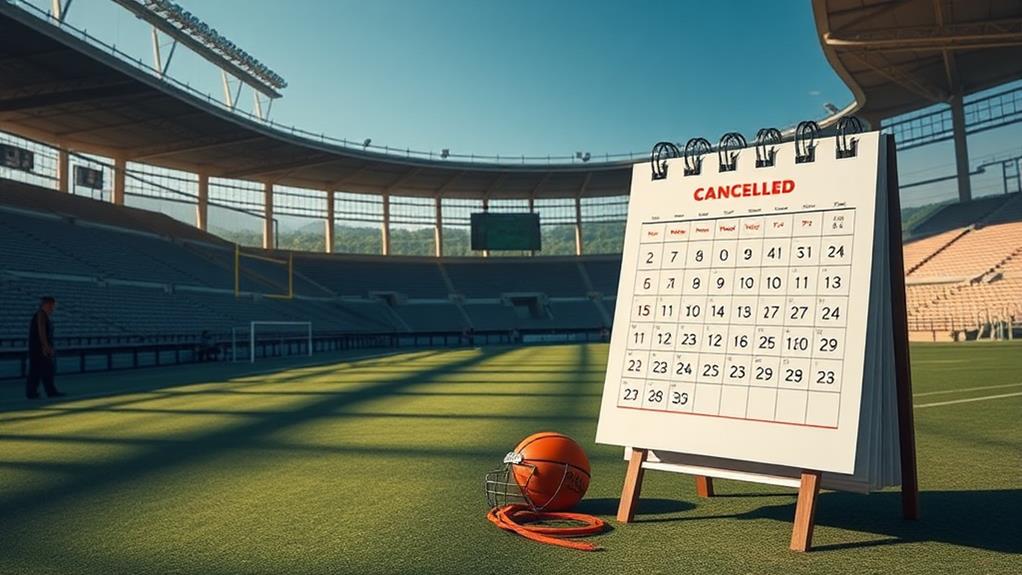
The COVID-19 pandemic has severely impacted the Philippine sports landscape, leading to numerous cancellations and postponements.
The Philippine Sports Commission (PSC) took drastic measures by canceling all sports events until December 2020, highlighting the severity of mass gathering prohibitions. This decision had a significant impact on athletes' competitive opportunities, particularly with the official cancellation of the 2020 ASEAN Para Games.
Collegiate sports were also severely disrupted. NCAA Season 95 ended abruptly without an overall championship, leaving student-athletes without closure. Additionally, the Philippine Football Federation postponed the 2020 season of the Philippines Football League (PFL), and the Copa Paulino Alcantara was canceled outright.
The cancellation of UAAP Season 83 on December 11, 2020, marked a significant interruption in university-level sports competitions.
These cancellations and postponements reflect the broader consequences of the pandemic on the sports community, resulting in lost opportunities for athletes to showcase their talents and compete at their best.
The ripple effect of these decisions underscores how deeply the pandemic has impacted sports events across the Philippines.
Government Responses
Government Responses to the Pandemic
In response to the widespread cancellations and disruptions in Philippine sports, the government implemented several strategies to safeguard public health while attempting to sustain athletic activities.
Conversion of Facilities: The government transformed sports stadiums into healthcare facilities, showcasing how public infrastructure can pivot to meet urgent health needs during the pandemic. This conversion allowed for the efficient use of existing infrastructure to support healthcare efforts.
Event Cancellations: The Philippine Sports Commission (PSC) canceled all sports events until December 2020, adhering to mass gathering prohibitions and emphasizing public safety. This decision was crucial in protecting the community from the spread of COVID-19.
Support for Athletes: Despite budget cuts, the PSC restored allowances for national athletes with help from other agencies, maintaining their morale and welfare during these trying times. This support ensured that athletes continued to receive the resources they needed to stay focused on their training.
Additionally, the government permitted non-contact sports like golf and cycling, while establishing a no-play stance for non-professional sports through collaboration with the Games and Amusements Board (GAB) and the Department of Health (DOH).
This balanced approach prioritized public health while allowing for some athletic activities to continue.
Training and Competition Changes
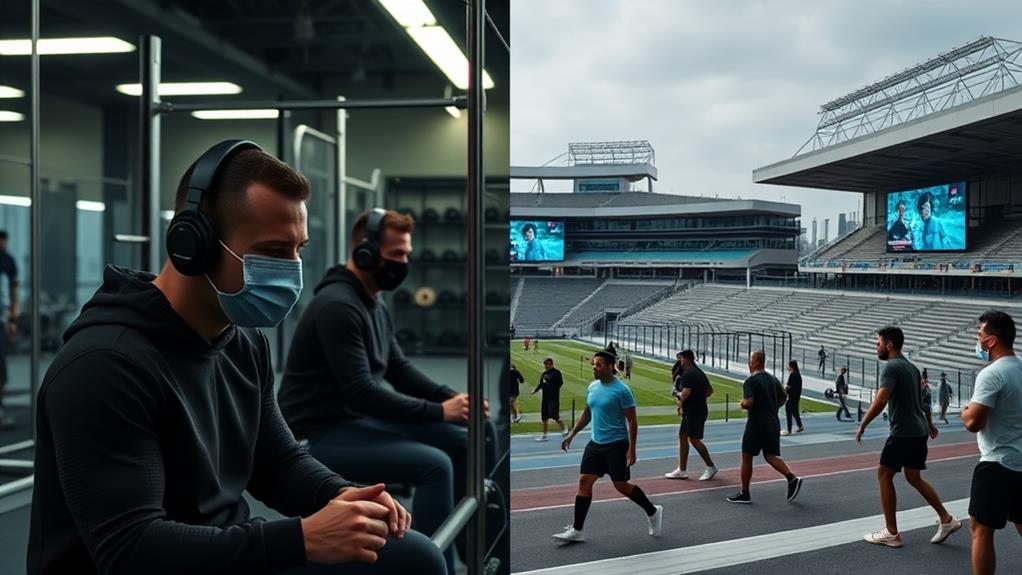
Pandemic-Induced Changes in Training and Competition
The COVID-19 pandemic necessitated significant adjustments to training and competition formats for athletes in the Philippines.
In March 2020, local-based track and field training came to a halt, with athletes waiting for its resumption in October 2021 in Baguio.
Sports Organizations Adapted to New Environments
The Philippine Basketball Association (PBA) modified its season format to fit a bubble environment, successfully resuming games in October 2020 after an extended suspension.
Similarly, the Filipino national cricket team found new training grounds in Blacktown City, while the women's national baseball team shifted to online training tools, demonstrating the impact of restrictions on team dynamics and methodologies.
Non-Contact Sports Thrived During Lockdowns
Non-contact sports like golf and cycling continued to thrive during lockdowns, allowing athletes to maintain their training while adhering to health guidelines.
The Importance of Resilience and Flexibility
These changes highlight how the pandemic forced athletes and sports organizations to innovate, adapt, and evolve in both training and competition formats.
Resilience and flexibility are key for future success in Philippine sports.
Sport-Specific Impacts
Athletes' experiences during the pandemic varied significantly across different sports. Each discipline adapted uniquely to unprecedented challenges, revealing the sports industry's tumultuous period.
The Philippine Basketball Association (PBA) successfully resumed its season in a bubble format. The PBA suspended its season on March 10, 2020, but creatively resumed in October, prioritizing player safety while trying to salvage the season.
In contrast, the Philippines Football League (PFL) faced indefinite postponements. The PFL's matches remained suspended due to health concerns, leaving players in limbo and affecting their readiness for future tournaments.
Women's sports suffered significant setbacks. The women's national baseball team's preparations for the 2020 Women's Baseball World Cup were disrupted, creating challenges in training and competition readiness.
Additionally, ALA Boxing's permanent closure after 35 years underscored the financial strain on many organizations.
The Olympic Games highlighted the fragility of the Philippine sports landscape. This revealed the need for resilience and innovation in navigating such crises.
Long-term Effects
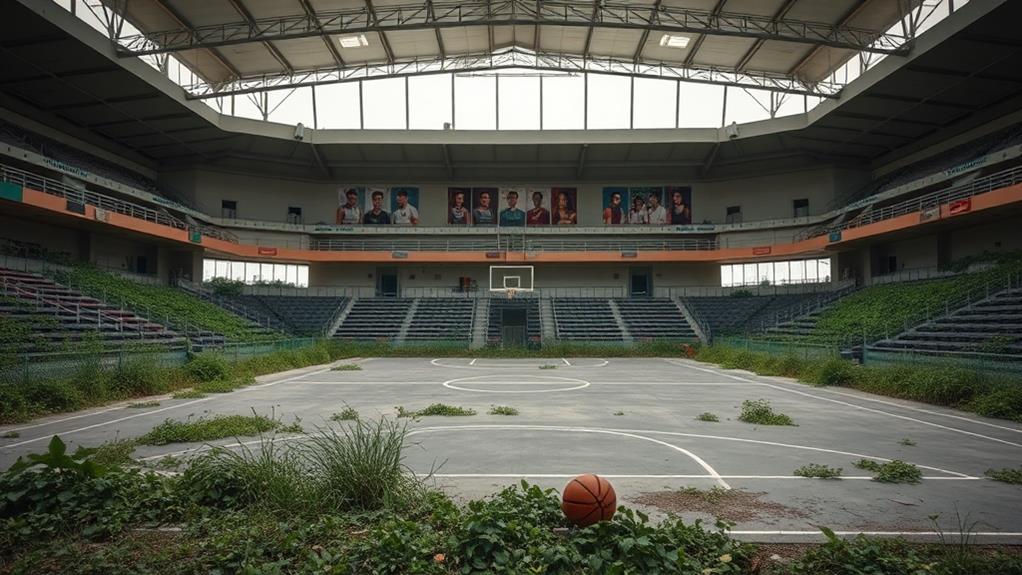
Long-term Effects of the Pandemic on Philippine Sports
The pandemic has brought about significant long-term effects on Philippine sports, reshaping its landscape in various ways.
Athlete Development
Delayed training and competition opportunities hinder growth. The cancellation of major events has cast doubts on athlete development, making it challenging for athletes to improve their skills and reach their full potential.
Financial Losses
Reduced funding affects operational capabilities. Sports organizations struggle to maintain competitive structures due to reduced participation and financial losses, making it difficult for them to operate efficiently.
Shift to Virtual Platforms
Online training enhances accessibility but may reduce engagement. As sports organizations pivot to virtual platforms, competitions are becoming more accessible, but the excitement of live events may be lost.
Health and Safety Protocols
Increased measures will redefine event formats and experiences. The new health and safety protocols are here to stay, prioritizing player and spectator safety, and will undoubtedly influence how sports are experienced and engaged with in the Philippines moving forward.
Economic Recovery Strategies
The Philippine sports industry must adopt innovative economic strategies to recover from the pandemic. To achieve this, focus on three key areas:
Leveraging Digital Platforms is crucial for generating new revenue streams and maintaining fan engagement. For instance, online events and training can keep athletes connected with their audiences. This approach enables the industry to adapt to the new normal and ensures business continuity.
Re-evaluating Sponsorships is essential to strengthen partnerships with sponsors. Emphasizing health and safety measures rebuilds trust and encourages increased investment in athlete welfare. This strategy helps to create a safe environment for athletes, which in turn attracts and retains sponsors.
Fostering Community Engagement is vital for mobilizing local support networks. Providing food and financial assistance to those affected by the pandemic reinforces the sports organizations' commitment to community welfare. This approach creates a positive impact beyond sports and helps to build a more resilient sports landscape.
Community Health and Development
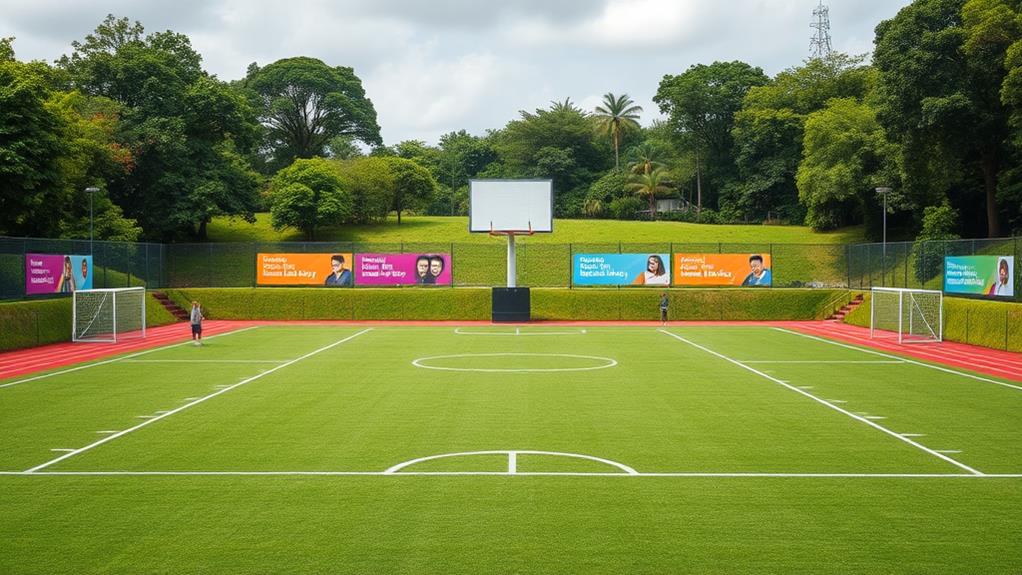
Community Health and Development through Sports
As the Philippine sports industry recovers economically, it's equally important to prioritize community health and development. Sports organizations have demonstrated a strong commitment to social responsibility during the pandemic. By providing food and financial assistance, they've made significant strides in supporting vulnerable populations.
Initiatives and Their Impact
Several initiatives have been launched to promote community health and development. For instance, the Philippine Sports Commission has distributed care packages to support youth and families in need.
Financial assistance programs have been established to aid athletes affected by natural disasters, promoting community resilience.
The "Rise Up! Shape Up!" series has been initiated to promote sports engagement and inclusivity, enhancing community development.
Health guidelines have been developed in collaboration with government agencies to ensure safety in sports activities.
Community involvement has been encouraged through various sports initiatives, fostering a sense of belonging.
The Unifying Force of Sports
These efforts showcase how sports can be a unifying force, enhancing community health while encouraging participation.
The ongoing collaboration between sports organizations and local communities is crucial as we navigate recovery and aim for a healthier future.
Media and Gender Equality
Media coverage of women's sports has significantly decreased during the pandemic, exacerbating existing gender inequalities.
To address this issue, it's essential to focus on the following key areas:
Reduced Visibility: Women athletes face limited recognition due to media outlets prioritizing men's sports, resulting in a smaller audience for female talent.
For instance, a study found that women's sports received only 4% of total sports media coverage in 2020.
Leadership Gaps: The pandemic has disproportionately affected women in leadership roles within sports organizations, leading to a decline in female representation.
According to a report, women held only 22% of senior leadership positions in sports organizations in 2020, down from 25% in 2019.
Engagement Declines: The shift to remote learning has disrupted traditional sports education, particularly for girls, limiting their opportunities to develop as athletes.
A survey revealed that 60% of girls reported a decrease in their sports participation during the pandemic.
Despite these challenges, the pandemic has sparked discussions around gender justice in sports.
Initiatives like the web series "Rise Up! Shape Up!" have emerged to empower women and promote equitable treatment.
Organizations are now reassessing their funding and support strategies, recognizing the need for increased media coverage and investment in women's sports.
Future of Philippine Sports
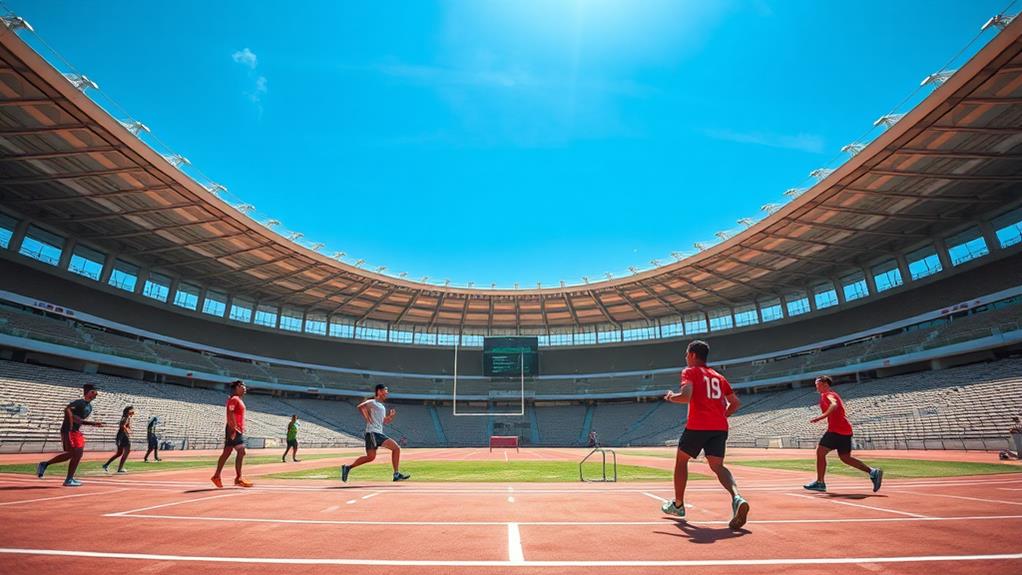
The future of Philippine sports is transforming significantly as organizations adapt to new safety protocols and hybrid event formats. This shift will result in a blend of physical and virtual participation, ensuring both athletes and spectators stay safe while engaging in sports activities.
The focus will be on mental health and well-being, as many athletes have faced unprecedented challenges during the pandemic.
Athlete development is crucial for a sustainable future. The Philippine Sports Commission and various leagues are exploring digital revenue streams to maintain financial stability while keeping fans engaged.
This includes online tournaments, virtual training sessions, and e-sports competitions, which will help athletes develop their skills and sports organizations recover from COVID-19's impacts.
Inclusivity and gender equality will take center stage in upcoming initiatives.
Programs like the "Rise Up! Shape Up!" web series aim to promote participation among diverse communities, ensuring that everyone has a chance to play.
These initiatives will provide access to sports facilities, training, and resources for underrepresented groups, fostering an environment where mental health, development, and inclusivity thrive.
Questions and Answers
How Has the Pandemic Affected Sports?
The COVID-19 pandemic has significantly disrupted athlete training, leading to extended periods of inactivity. For instance, the 2020 Summer Olympics were postponed to 2021, causing athletes to adjust their training schedules and plans. This inactivity has resulted in a decline in athlete performance and overall fitness.
The pandemic has also led to a void in fan engagement, leaving supporters disconnected from their favorite teams. The cancellation of major sporting events, such as the NCAA March Madness tournament, has deprived fans of the excitement and camaraderie that comes with live sports. This disconnection has resulted in a decline in fan loyalty and engagement.
Furthermore, the pandemic has posed significant sponsorship challenges, as companies have reevaluated their investments in sports. With reduced revenues and increased uncertainty, many organizations have struggled to secure funding. For example, the NBA has reported a significant decline in sponsorship revenue due to the pandemic.
In response to these challenges, innovative solutions are needed to maintain connections with fans and support athletes. Leagues and teams have had to adapt quickly, implementing virtual events and online engagement strategies to stay connected with fans.
Additionally, organizations have had to find creative ways to support athletes, such as providing virtual training programs and mental health resources.
What Did the Pandemic Do to the Philippines?
The pandemic severely affected the Philippine economy, causing significant financial strain on local businesses and leading to increased unemployment rates.
This economic downturn was further exacerbated by the restriction on gatherings, which not only limited social interactions but also halted community engagement.
The pandemic also had a profound impact on mental health, as prolonged isolation took a toll on many individuals.
This led to a surge in mental health issues, which became a major concern for the country.
Furthermore, the sports infrastructure suffered significantly, with funding cuts and postponed events making it challenging for athletes to train and compete.
This setback had long-term implications for the country's sports development.
In summary, the pandemic reshaped various aspects of life in the Philippines, bringing about far-reaching consequences for the economy, social interactions, mental health, and sports development.
What Did the Pandemic Impact?
The pandemic significantly impacted athlete training, causing significant interruptions to their regular regimens. For instance, many athletes had to rely on virtual training sessions and individual workouts to maintain their fitness levels.
The pandemic also led to decreased fan engagement, as numerous sports events were canceled or postponed. This resulted in lost revenue for teams and organizers, as well as a void in entertainment for fans.
Sponsorship challenges arose as brands reevaluated their marketing strategies to adapt to the new circumstances. Many brands shifted their focus to digital marketing and social media campaigns to reach their target audiences.
Furthermore, the pandemic raised concerns about mental health among athletes and fans. Social isolation and uncertainty took a toll on their mental wellbeing, highlighting the need for additional support systems.
How Has COVID-19 Affected the Sports Industry in India?
The COVID-19 pandemic has significantly impacted India's sports industry.
Sports infrastructure has undergone a significant transformation, with organizations adapting to new health protocols to ensure a safe environment for athletes and spectators.
For instance, stadiums are now equipped with thermal scanners, and players are required to maintain social distancing during training sessions.
The mental health of athletes has become a top priority, as many struggle with the isolation and uncertainty caused by the pandemic.
Studies have shown that athletes are more likely to experience anxiety and depression due to the lack of social interaction and competition.
Fan engagement has also undergone a significant shift, with digital platforms becoming the primary means of keeping interest alive.
Social media, in particular, has played a crucial role in maintaining fan engagement, with many sports organizations using it to share updates, behind-the-scenes footage, and interactive content.
As the industry looks towards economic recovery,
it is clear that resilience and innovation will be key factors in shaping the future of sports in India.